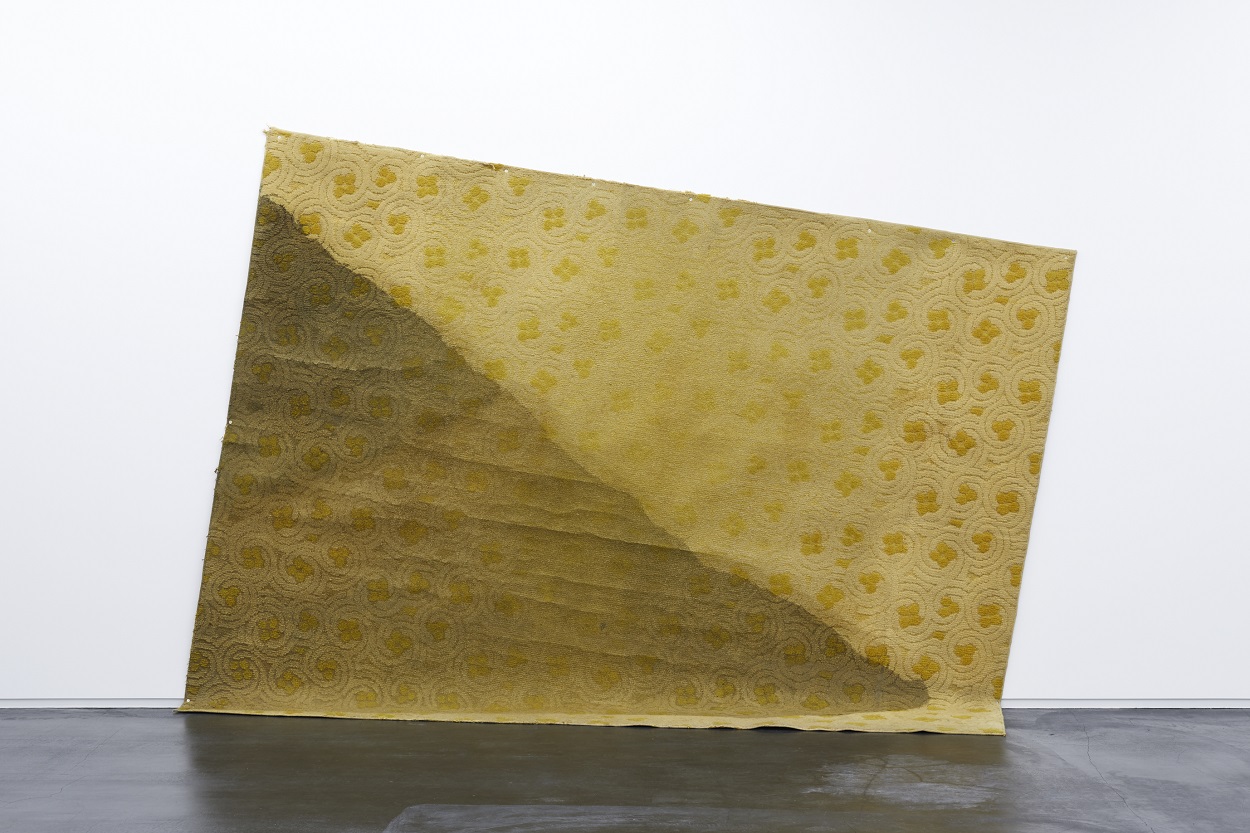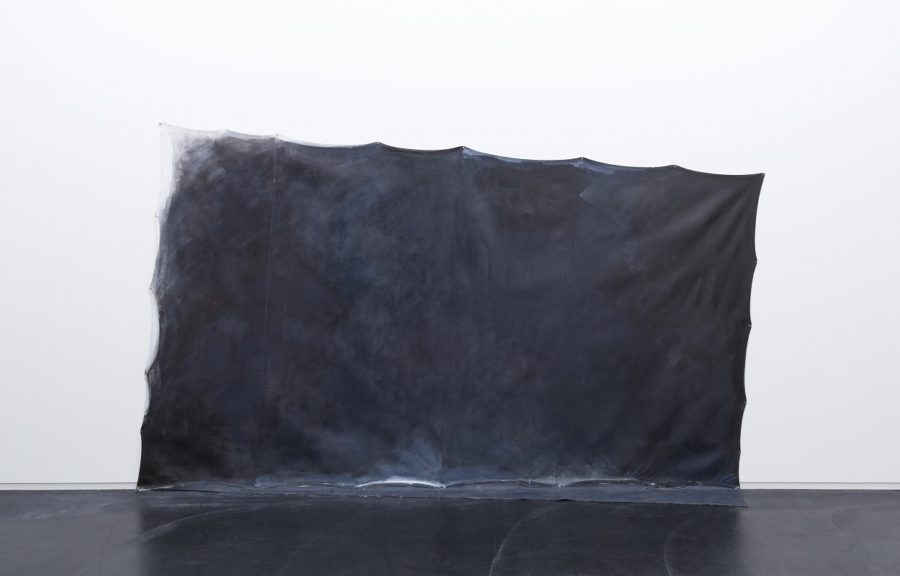Venture to Taka Ishii Gallery, in Tokyo’s upscale Roppongi neighborhood, before Nov. 18, and you’ll be rewarded with Kōji Enokura’s solo show “Figure.” Recognized as a member of the Mono-ha, a group of Japanese artists from the late ’60s who eschewed Western art practices and combined organic and industrial materials in their methods, Enokura skillfully toed the line between painting and making art objects. The standout pieces in “Figure” are two matte-black canvases that have been dipped in oil paint, cut into off-kilter shapes, and drawn taut to the gallery wall with construction-grade nails. Figure C-No. 1 (1985) provides a colorful antidote to the otherwise monochrome palette, and features a stain that bleeds through the textile at the point where it meets the ground. Some items may be familiar from “Blackness in Abstraction,” Pace gallery’s 2016 show in New York, which positioned Enokura’s works in relation to pieces by Sol LeWitt, Louise Nevelson, Glenn Ligon, Carrie Mae Weems, and Wangechi Mutu. As in that exhibition, this site-specific installation challenges viewers’ perceptions, an effect similar to that of Kazimir Malevich’s groundbreaking “Black Square” painting. Unlike the Russian abstractionist, though, Enokura’s works are imperfect and warped, seeming to melt into their surrounding environments.
How Kōji Enokura’s Minimalist Works Toe The Line Between Paintings and Art Objects
Tokyo’s Taka Ishii Gallery showcases a monochromatic installation by the Japanese artist.
BY Anna Furman
November 10, 2017

 4
4
Koji Enokura at Taka Ishii
…
Koji Enokura at Taka Ishii

Koji Enokura at Taka Ishii

Koji Enokura at Taka Ishii

Koji Enokura at Taka Ishii

(Photos: Kenji Takahashi, Courtesy Taka Ishii Gallery Tokyo)
Related Stories
Spice of Life at Sugar Beach Is a Living Gallery in...
Art Basel Hong Kong’s Special Sectors Were Thought...
In “Downforce,” Michael Kagan Channels the...
“Repose” Casts a Soft Light on the Art of Ballet
Natalie Bell Speaks on Steina’s Enduring Impact
The Surface Primer On L.A. Art Week
With Strata, Adrian Yu Transcends Sculpture into...
A Peaceful Reprieve Within Wu...
Zona Maco’s Zélika García on the Most Exciting...
To Open Mexico City Art Week, Gabriel Orozco Takes...
Next Article
